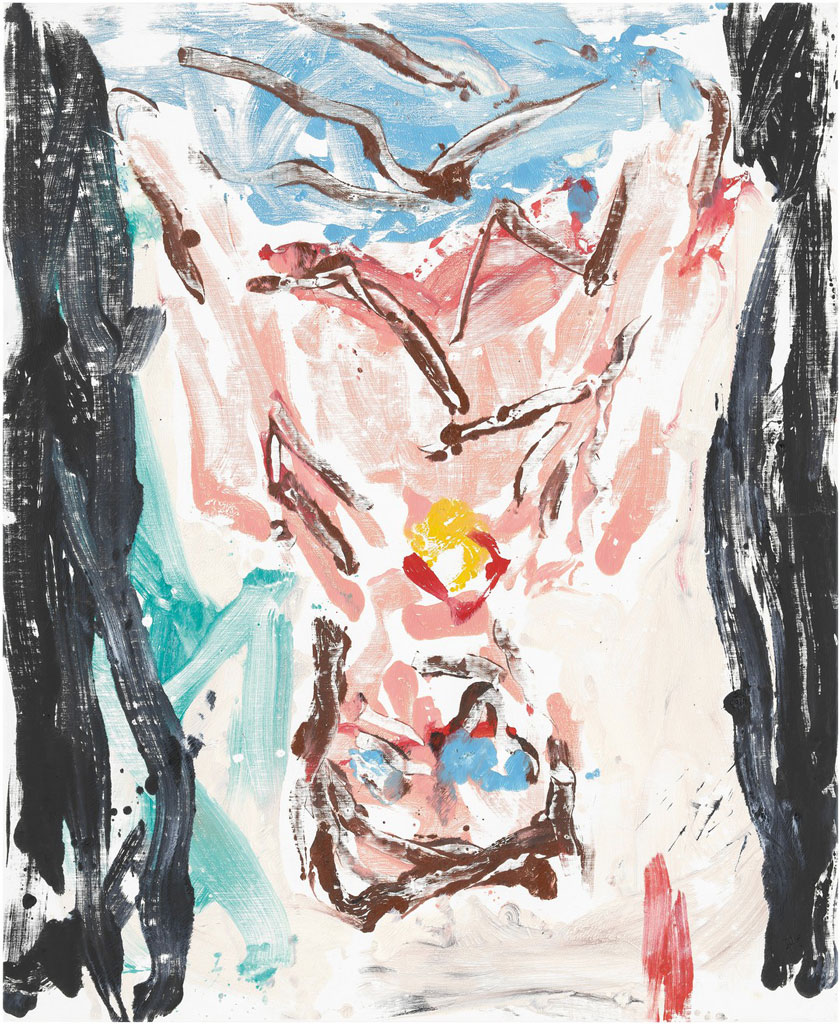ART CITIES:San Francisco -Georg Baselitz
![Georg Baselitz, Orangenesser 8 (Orange Eater 8)[detail], 2019 Oil on canvas, 170 × 145 cn, © Georg Baselitz, Photo: Jochen Littkemann, Courtesy the artist and Gagosian](http://www.dreamideamachine.com/web/wp-content/uploads/2020/03/out2.jpg) Georg Baselitz is a pioneering Neo-Expressionist who rejected abstraction in favor of recognizable subject matter, deliberately employing a raw style of rendering and a heightened palette in order to convey direct emotion. Embracing the German Expressionism that had been denounced by the Nazis, Baselitz returned the human figure to a central position in painting.
Georg Baselitz is a pioneering Neo-Expressionist who rejected abstraction in favor of recognizable subject matter, deliberately employing a raw style of rendering and a heightened palette in order to convey direct emotion. Embracing the German Expressionism that had been denounced by the Nazis, Baselitz returned the human figure to a central position in painting.
By Dimitris Lempesis
Photo: Gagosian Gallery Archive
In his solo exhibition “What If…” Georg Baselitz conjures new formal developments from art historical lineages, his own extensive oeuvre included. Although his paintings focus on the human figure, his raw, vigorous mark making creates new and emotionally charged routes within abstraction. The paintings in the exhibition mark a significant development in Baselitz’s technique. The paintings are created with a transfer method: he paints on a piece of unstretched canvas and then presses a second canvas onto the first to make an impression in oils. Through this technique, Baselitz continues to expand his own practice of painting and mark making, finding new ways to treat established subjects. Baselitz uses his established motifs to explore the possibilities of the transfer method, allowing new connections to emerge between disparate series and stylistic influences. One group of paintings in the exhibition refers directly to his “Orangenesser” series (1981–82), in which spiky-haired men are depicted devouring the titular fruit. Other works are derived from a 1974 nude portrait of his wife, Elke, who is shown sitting on a chair with her arms folded and ankles crossed. Rather than mining the figural iconography of these motifs, Baselitz perceives them as objective arrangements of shapes and lines made by paint—transferring their enigmatic markings onto new canvases in a process of looking that oscillates between abstraction and representation.
Born as Hans-Georg Kern in Deutschbaselitz, Germany, on 23/1/1938, artist Georg Baseltiz (self-renamed after his hometown in 1958) lived through and came of age during World War II and its aftermath. Of his experience with the War, he observed, “I was born into a destroyed order, a destroyed landscape, a destroyed people, a destroyed society. And I didn’t want to reestablish an order: I had seen enough of so-called order”. Baselitz’s affinity for stylistic and medium experimentation throughout his career can be interpreted through the lens of early experiences with the War and the devastation it caused. In 1956 Baselitz studied for two terms at the Academy of Visual and Applied Art in Weissensee, East Berlin, where he was briefly trained in state sanctioned social realism. He was ultimately expelled, and went on to study at the Academy of Visual Arts in West Berlin. Early in his career, Baselitz grappled with the idea of national identity, as many contemporaneous German artists did, but unlike his contemporaries, who embraced new modes such as Pop or Conceptual art, Baselitz revisited German Expressionism, which had been censured by the Nazis, and he ultimately helped spur a revival of Neo-Expressionist painting. Human figuration is a fundamental component across Baselitz’s oeuvre, however bodies are largely presented in an uncanny, discomfiting manner, figures are often upside down, made grotesque through heavy brushwork, or shown in tattered clothing and with ragged forms. At his first solo exhibition in 1963, two works were confiscated by authorities after being deemed indecent; although never again quite to this extent, Baselitz’s work has at times continued to draw controversy, due both to his technical approach and the conceptual imperatives he often addresses in relation to post-World War II German identity.
Info: Gagosian Gallery, 657 Howard Street, San Francisco, Duration: 12/3-2/5/20, Days & Hours: Mon-Sat 10:00-18:00, https://gagosian.com
To help prevent the spread of COVID-19, Gagosian Galleries are closed until further notice.



